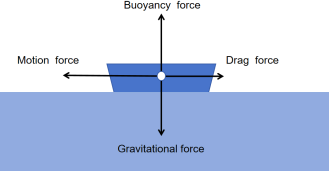关键词 > Physics代写
Physics
发布时间:2024-06-28
Hello, dear friend, you can consult us at any time if you have any questions, add WeChat: daixieit
Introduction
For most people, going to the beach or outdoor swimming pool for a relaxing swim is indeed a refreshing activity. I am no exception. While paddling my hands through the water, I noticed that when I move my hands faster, the the harder it becomes, and it takes me longer to reach that speed. I realize that there is possibly a positive relationship between the speed of an object moving through the water and the time expended, if, that is, the force is constant. In order to prove this theory, I chose to form a suitable model form a suitable model to discover this relationship.
Research question
What is the relationship between terminal velocity of an object moving through water and the final drag force acting upon the object.
Background information
The aim of this investigation is to find out the relationship between the terminal velocity and drag force acting upon the object that is passing through water. The reason why I chose terminal velocity is that velocity is a constant when both its magnitude and direction do not change over time, and that the net force acting upon this object is zero.
A moving object in water would have multiple forces acting upon it. The buoyancy force, pointing upwards, created due to the force exerted by the water on the object; gravitational force, due to the weight of the object pointing downwards; motion force, created by the gravity on the weights; and drag force, due to the friction of water upon the object, in the opposite direction of velocity.
At first, when the motion force us applied, its magnitude exceeds drag force, so the boat is accelerating. As it is hypothesized that there is possibly a positive relationship between velocity and drag force, as the object accelerates, and velocity increases, the drag force increases as well.

Figure 1L forces on the object
In this model, the buoyancy force is assumed to be the same magnitude as the gravitational force, so the horizontal forces even out.
As motion force is a constant, the only way the net force upon the boat can become zero is when the drag force increases to a point where motion force and drag force even out, and the boat is moving at a constant velocity.
As it is virtually impossible to measure an accurate drag force upon the object without including new variables to the experiment, it has been decided to base the investigation on the terminal velocity and final drag force, as they are more measurable.
It is assumed that the final drag force is equivalent to the motion force, which is in turn provided by the gravitational weight of the weights, and no energy is lost as thermal energy due to friction of the pulleys or to water.
Variables
|
Identifying variables |
Methods to measure/control variables |
|
|
Independent variables |
Velocity (V) |
Recording camera, analyzing the video with logger pro |
|
Dependent variables |
Drag force on the object (F) |
Measure the pulling force on the object to make it move at a constant velocity with a spring dynamo-meter . |
|
Controlled variables |
The front area of the object (A) |
The object would have a measurable constant frontal area such as a square so circle |
|
Density of fluid the object passes through (ρ) |
The fluid will be water and a a constant of 1g/cm^3, so as to eliminate potential influence due to density of fluid |
|
|
Shape |
The object will be a model boat so that the shape is also a constant |
|
Preparations
Equipment
200cm of string, 2 pulleys, 1 clear plastic container of 15*15*120cm, 10L of water, 1 camera, 1 computer containing the app logger pro, weights of 5g, 10g, 20g, 50g, 100g, 1 glue gun, 1 model boat
Setup and procedure
Step one
Using the clue gun, glue the 2 pulleys onto the side of the clear plastic container, as shown in
the figure below

Figure 2: plastic container with pulleys glued on
Step two
Pour the water into the container, until the water is 1cm lower than the first pulley

Figure 3: plastic container with water
Step three
Connect the string with the boat model, place the model at the far end of the container,
thread the string into the two pulleys as in figure 4.

Figure 4: thread the string into the pulleys
Step four
Connect various weights to the strings, use a camera to film the movement of the model boat. The process shall be done six times, with weights of different combined masses of 10g, 20g, 30g, 50g, 60g, and 100g.
Step five
Analyze the video, collect the values of the terminal velocity at each different masses.

